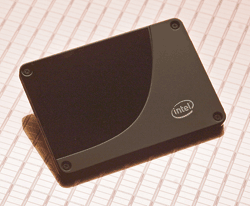Behind Intel’s solid-state drives
Solid-state disk drive are among the most interesting new products around. When I wrote the story for Intel’s Product of the Year award in December, I noted that: ”Solid-state disk drives are suddenly everywhere, but many are not much faster than a HDD, some take just as much or more power, and most cost a fortune!” But leave it to Intel to take a big technology leap forward, and their X18-M, X25-M, and X25-E 1.8- and 2.5-in. SSDs certainly are that with 85-µs access times and 150-mW active power.
The fundamental technology for the drive stemmed from early work at the Storage Technologies Group labs that focused on platform NVM caching and solved the issues of getting good random write performance with NAND flash. The technology development was a close partnership between the labs and the NAND Solutions Group in Folsom, CA.

After that there was involvement from all over the place. The ASIC for the drive was developed by a small design team in Oregon (Storage Technologies Group, STG). The base firmware was initially done by the team in Oregon and quickly evolved to a close partnership involving firmware teams located in Oregon, Folsom, and Longmont, CO. A new validation infrastructure was built in Folsom. The hardware design and ASIC verification was done by a team in Vancouver. A new factory infrastructure was created and developed in manufacturing technologies.
Intel set forth a team to build an SSD that was not just a modified memory stick, but rather a device build from the ground up as a truly PC-worthy SSD. The team was told not to look at what was out on the market today, because they wanted fresh ideas.
They got that and more and in the process set the industry standard for these important devices. The M versions are the “mainstream” lower-cost versions, using multilevel flash, and come in 80- and 160-Gbyte capacities starting at about $300 each. A new version of the drives has just arrived on the scene using 32-nm flash. Their starting list price, for 80 Gbytes, is $225, and it will be interesting to see what discounters sell them for. More info on the drives can be found at www.intel.com/design/flash/nandand at www2.electronicproducts.com/ComputerPeripherals.aspx.
Jim Harrison
Advertisement
Learn more about Intel





